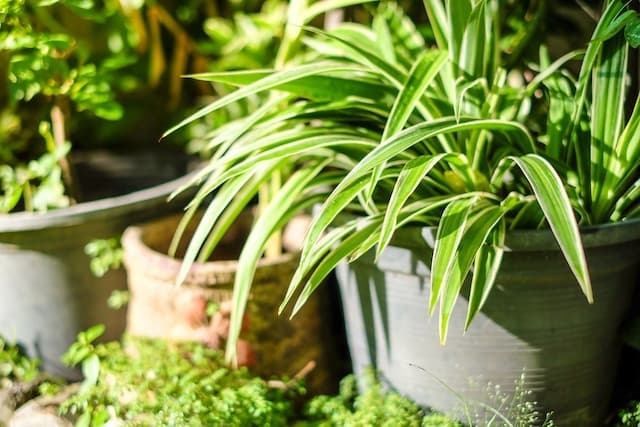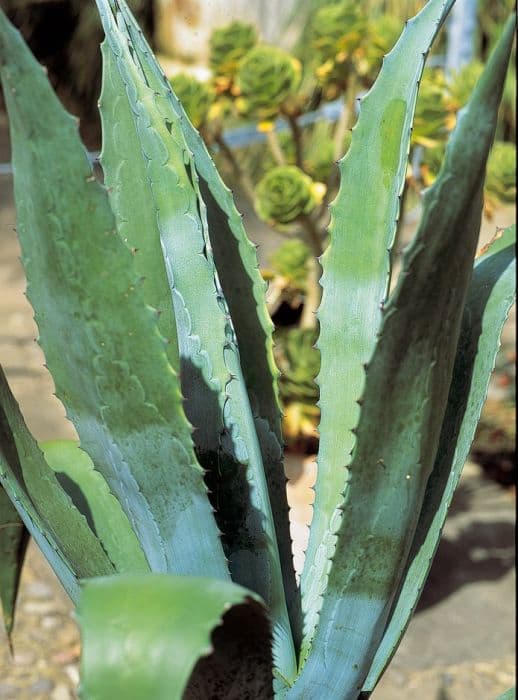Asparagus fern Asparagus setaceus

ABOUT
The plant commonly known as lace fern is a visually striking and delicate evergreen species. It features feathery, fern-like sprays of foliage that are gracefully arching and nearly resemble the true ferns that it often gets mistaken for. The leaves are a rich green in color, creating a soft, fluffy appearance that is both elegant and intricate. Each branch of the lace fern is composed of many small leaflets that densely cover its length, giving the foliage a fine texture that looks almost like a soft green mist from a distance. When touched, the plant is surprisingly firm despite its delicate looks, with the stems being wiry and somewhat flexible. In its native habitat, the lace fern often climbs and sprawls, shooting out multiple stems that intertwine and create a tangled, lush display. Even though it is not a flowering plant, its beauty lies in the sophisticated structure of its leaves and the dense foliage it provides, lending a tropical and exotic feel to its surroundings. The plant is commonly used in hanging baskets and as a graceful filler in mixed arrangements because of its unique visual properties.
About this plant
 Names
NamesFamily
Asparagaceae.
Synonyms
Asparagus Fern, Plumosa Fern, Lace Fern, Climbing Asparagus, Ferny Asparagus, African Asparagus Fern, Common Asparagus Fern.
Common names
Asparagopsis setacea, Asparagus plumosus, Protasparagus setaceus, Asparagus setaceus var. setaceus, Asparagus setaceus var. sylvaticus.
 Characteristics
CharacteristicsLife cycle
Perennials
Foliage type
Evergreen
Color of leaves
Green
Flower color
White
Height
6-8 feet (1.8-2.4 meters)
Spread
3-4 feet (0.9-1.2 meters)
Plant type
Climber
Hardiness zones
9
Native area
Africa
Benefits
 General Benefits
General Benefits- Aesthetic Appeal: Asparagus setaceus, commonly known as Plumosa Fern, adds a delicate, feathery texture to gardens and indoor settings with its fine, needle-like foliage.
- Easy to Grow: It tolerates a range of growing conditions and can be easily propagated, making it a good choice for novice gardeners.
- Versatile Ornamental Plant: This plant is often used in floral arrangements, as a hanging plant, or as ground cover, due to its attractive appearance.
- Drought Tolerance: Once established, Plumosa Fern can tolerate periods of dryness, requiring less frequent watering than many other plants.
- Screening Plant: Because of its dense foliage, it can be used to provide a green screen for privacy in garden settings.
 Medical Properties
Medical PropertiesThis plant is not used for medical purposes.
 Air-purifying Qualities
Air-purifying QualitiesThis plant is not specifically known for air purifying qualities.
 Other Uses
Other Uses- As a decorative bottle topper for gifts: The delicate foliage of Asparagus fern can be used to adorn gift bottles, adding a green and festive touch to wine or homemade vinegars.
- In bridal bouquets or wedding decor: The feathery texture of Asparagus fern adds softness and greenery to wedding bouquets and venue decorations without overshadowing other flowers.
- As a natural toy for pets: Some pet owners use Asparagus fern as a plaything for cats, although it's important to ensure the plant is not ingested as it can be toxic to pets.
- In crafting and scrapbooking: Pressed Asparagus fern leaves can be used to embellish scrapbooks or handmade greeting cards with a touch of nature.
- As a base for essential oil diffusers: The plant can act as a natural diffuser when essential oils are applied to the foliage, aiding in the distribution of the scent throughout a room.
- In terrariums: Asparagus fern's fine texture and adaptability make it a popular choice for creating miniature landscapes within glass terrariums.
- For creating natural art: Artists and hobbyists may incorporate Asparagus fern into mixed-media art or botanical compositions for its intricate leaf patterns.
- As a table centerpiece: Styled within a low vase, Asparagus fern can serve as a simple yet elegant centerpiece for dining or coffee tables.
- In hanging baskets: Asparagus fern is often planted in hanging baskets where its cascading growth can be displayed to full effect on patios or indoors.
- For fashion accessories: Small sprigs of Asparagus fern can be woven into hair accessories, such as headbands or combs, for a green and natural accent at special events.
Interesting Facts
 Feng Shui
Feng ShuiThe Asparagus Fern is not used in Feng Shui practice.
 Zodiac Sign Compitability
Zodiac Sign CompitabilityThe Asparagus Fern is not used in astrology practice.
 Plant Symbolism
Plant Symbolism- Elegance: Asparagus fern (common name for Asparagus setaceus) with its fine needle-like leaves can be symbolic of elegance and delicacy due to its airy, feathery appearance.
- Protection: The plant's dense foliage has been associated with a safe haven or protective environment, suggesting a symbol of shelter and safety.
- Fertility: In some cultures, Asparagus fern's vigorous growth is seen as a sign of fertility and abundance, making it a symbol of creativity and reproduction.
- New Beginnings: As it is often used in floral arrangements for weddings and celebrations, the Asparagus fern can represent new beginnings or the start of a new journey.
 Water
WaterThe lace fern should be watered thoroughly, enough to soak the soil evenly, every time the top inch of soil feels dry to the touch. On average, this can be approximately every 5 to 7 days, but this frequency may need to be adjusted depending on the humidity and temperature of your environment. It's important not to overwater, as the roots are prone to rot in soggy soil. When watering, it is best to use around 16 to 32 ounces of water for a standard indoor pot size, ensuring that excess water can drain freely from the bottom.
 Light
LightThe lace fern thrives in bright, indirect light but can also tolerate a bit of direct morning sunlight. It's best to place it in an east or north-facing window where it gets plenty of light but is shielded from the harsh midday sun. Avoid the intense afternoon sunlight coming from south and west-facing windows which can scorch the delicate foliage.
 Temperature
TemperatureThe lace fern prefers a temperate climate with temperatures ranging between 65 and 75 degrees Fahrenheit during the day, slightly cooler at night, but not below 50 degrees Fahrenheit. It should be kept away from cold drafts and heating sources that could cause sudden temperature changes. The plant is not frost-tolerant and can be damaged by temperatures below 50 degrees Fahrenheit.
 Pruning
PruningThe lace fern requires occasional pruning to remove dead or yellowing fronds, which also helps to maintain the plant's shape and encourages healthy growth. It's best to prune in the spring or early summer when the plant is actively growing. Use clean, sharp scissors to snip off unwanted fronds at the base, taking care not to damage the main stem or nearby healthy growth. Pruning can be performed every few months or as needed when you observe dead or discolored fronds.
 Cleaning
CleaningAs needed
 Soil
SoilThe Lace Fern thrives in well-draining, airy soil with a pH of around 6.5-7.5. A mix of two parts peat, one part loam, and one part perlite or sand is ideal, which ensures good drainage and aeration. Regularly adding organic matter can help keep the soil conditions optimal for this delicate fern.
 Repotting
RepottingLace Ferns should be repotted every couple of years to refresh the soil and accommodate root growth. They're fast-growers and may need to be repotted more frequently if they become root-bound or the soil becomes compacted, typically in the spring or early summer.
 Humidity & Misting
Humidity & MistingLace Ferns prefer a high humidity environment, around 60-70%. They thrive in moist air, so maintaining these humidity levels, especially in dry indoor conditions, can be achieved with regular misting or using a pebble tray with water under the pot.
 Suitable locations
Suitable locationsIndoor
Grow Lace Fern in indirect light, keep soil moist, and maintain high humidity.
Outdoor
Plant Lace Fern in dappled shade, ensure soil drains well and mist regularly.
Hardiness zone
9-11 USDA
 Life cycle
Life cycleAsparagus setaceus, commonly known as lace fern or asparagus fern, begins its life cycle as a seed that germinates in moist soil conditions with adequate warmth. After germination, seedlings emerge with their first set of true leaves, and the root system starts to establish. As the plant matures, it develops feathery, fern-like foliage that can grow quite long and start to vine; this foliage stage is primarily vegetative growth. Upon reaching maturity, asparagus ferns produce small, inconspicuous white flowers, often unnoticed due to their size and the density of the foliage. Following flowering, if pollination occurs, the plant produces small berries that turn from green to red as they mature, containing seeds that can disperse to begin new plants. Throughout its life, asparagus ferns may also spread vegetatively through their tuberous roots, creating a dense network of growth over time.
 Propogation
PropogationPropogation time
Spring to Summer
Asparagus fern, commonly known as Asparagus setaceus, is often propagated through division, which is the most popular method for this plant. Division should ideally be done in the spring when the plant is beginning to grow actively. To propagate by division, carefully remove the plant from its pot and use a sharp knife to divide the root ball into sections, making sure each section has plenty of roots and at least one or two growing points or stems. Then, replant each division in a separate pot filled with a well-draining potting mix, water thoroughly, and place it in a warm, well-lit area without direct sunlight. It's important to maintain consistent moisture without waterlogging the soil. New growth usually indicates that the division has been successful, and the plant can continue to be cared for as usual.









